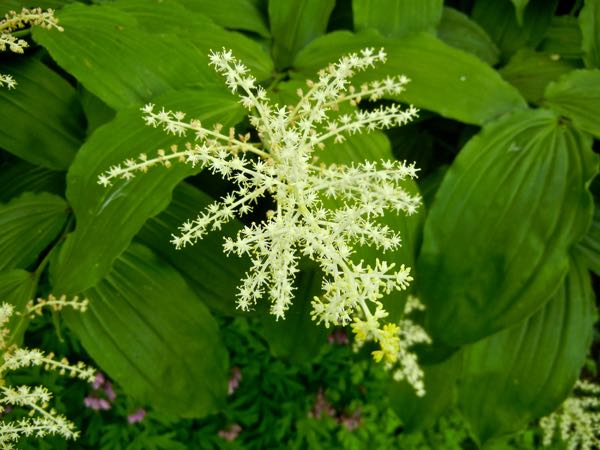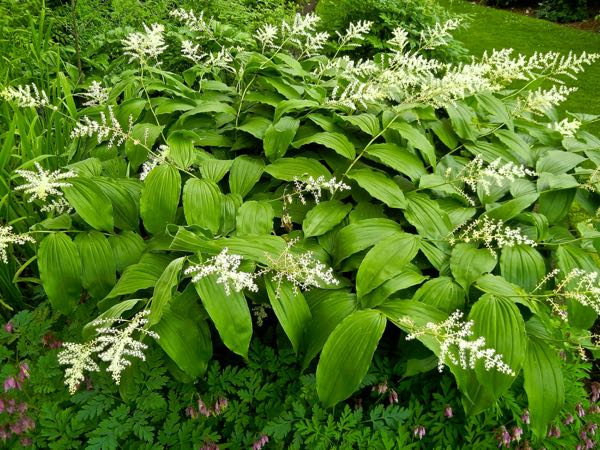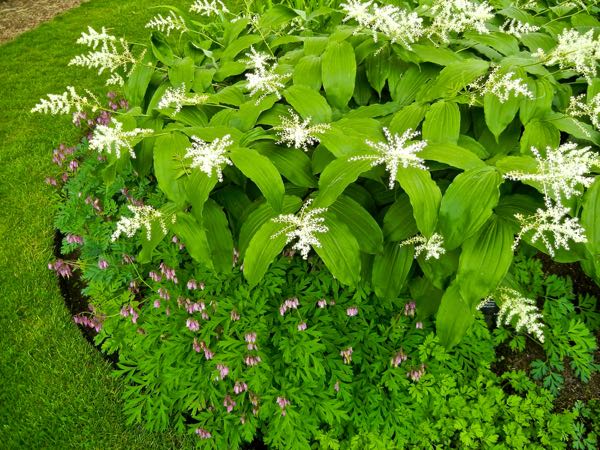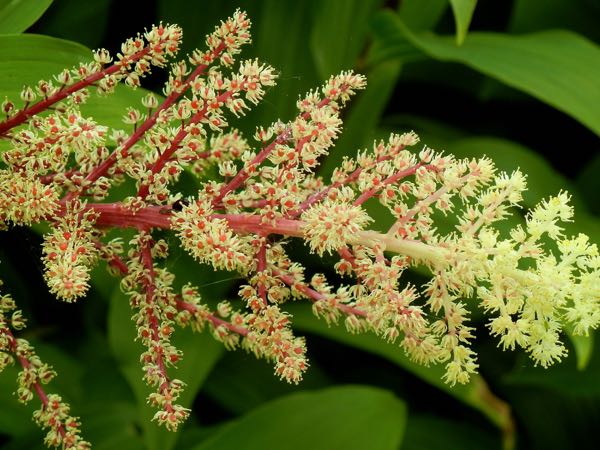Maianthemum racemosum: The Delicate Beauty of False Solomon’s Seal
Background and Family: Maianthemum racemosum, known by various names such as Smilacina racemosa, False Spikenard, or American Spikenard, belongs to the Asparagaceae family of plants. Native to North America, including the USA, Canada, and northern Mexico, this enchanting herbaceous perennial has captured the hearts of gardeners and nature enthusiasts alike.
Characteristics and Description: Maianthemum racemosum forms clumps and grows from underground rhizomes. With a height reaching approximately 60cm or 2ft, it showcases pyramid-shaped, fluffy flowers arranged in terminal panicles. These delicate flowers are white, exude a pleasant fragrance, and bloom in the spring. The lush foliage consists of broad-elliptical leaves that grow alternately. After flowering, green fruit develops and eventually ripens into red berries.
Cultivation of Maianthemum racemosum:
Sunlight: Maianthemum racemosum thrives in partial to full shade. It prefers shelter from direct sunlight, making it an excellent choice for woodland gardens or shaded areas.
Watering: Regular watering is essential, particularly during the first year after planting. Ensure deep watering to reach the roots, and allow the top inch of soil to dry out before watering again. Maintaining consistent moisture levels without waterlogging is crucial.
Soil: Plant Maianthemum racemosum in humus-rich, fertile soil that offers good drainage. It appreciates moist conditions but dislikes excessive water accumulation. Well-drained soil contributes to the overall health and vigor of the plant.
Pruning: Maianthemum racemosum generally does not require regular pruning. However, trimming back the plant in the spring can encourage new growth and help maintain a tidy appearance. This can be done by removing any dead or damaged foliage.
Pests and Diseases: Maianthemum racemosum is relatively resistant to pests and diseases. However, it may be susceptible to issues such as powdery mildew and aphids. Prompt treatment with suitable fungicides or insecticides can effectively manage these problems if they occur.
Propagation: Maianthemum racemosum can be propagated either through seed or division methods. While seed germination may take up to six weeks, propagation through division is generally easier and more reliable. To divide a Maianthemum racemosum plant, carefully dig it up in the spring or fall and separate it into two or three sections. Each division should possess a healthy root system and a few leaves. Transplant the divisions to a new location that receives partial to full shade.
Traditional Uses and Cautions:
The young shoots of Maianthemum racemosum are edible and have a flavor reminiscent of asparagus. However, as the plant matures, it tends to develop a bitter taste. Native Americans utilized the roots of this plant for medicinal purposes, including as a laxative. Additionally, it’s worth noting that Maianthemum racemosum bears some resemblance to Baneberry, a toxic plant.
Planting: Maianthemum racemosum can be planted either in the spring or fall. Select a location that provides partial to full shade, ideally mimicking its natural woodland habitat. The soil should be moist yet well-drained to ensure the plant’s healthy growth and development.
By embracing the allure of Maianthemum racemosum in your garden, you invite the delicate charm of False Solomon’s Seal to grace your outdoor spaces. Its graceful blooms, lush foliage, and ease of cultivation make it a cherished addition to shaded areas, where it can enchant both gardeners and visitors alike.
Maianthemum racemosum, commonly known as False Spikenard or American Spikenard, goes by several other names and synonyms. These include Convallaria ciliata, Convallaria racemosa, Maianthemum racemosum subsp. racemosum, Polygonastrum racemosum, Sigillaria ciliata, Sigillaria multiflora, Smilacina ciliata, Smilacina flexicaulis, Smilacina latifolia, Smilacina racemosa var. cylindrata, Smilacina racemosa f. foliosa, Smilacina racemosa var. lanceolata, Tovaria racemosa, Unifolium racemosum, Vagnera australis, Vagnera racemosa, and Vagnera retusa. Each of these names represents different regional variations or historical classifications of this captivating plant species.








